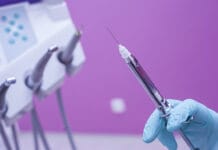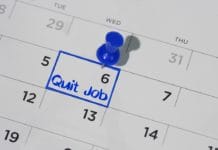Managing our time effectively in patient care is stressful, tiresome, and can often be out of our control. In 2018, Nayaka describes time management as planning available time in conjunction with personal goals while keeping individual likes, dislikes, and preferences in mind.1 She also states that good time management results in less stress, greater productivity, and improved efficiency.
In hygiene school, we were given three hours to provide compressive patient care. This is compared to the private practice setting where the same quality of care is provided in a 60-minute appointment − sometimes even less. It seems as though more responsibilities are being added to what is expected and accomplished during a dental hygiene appointment.
When our time is not managed correctly, a clinician can become stressed and may begin to cut critical corners to stay on time. A stressed hygienist may fail to notice an abnormal lesion, an important health history update, or a significant change in periodontal status, putting the patient at risk too.
Achieving effective time management is a progressive lifelong skill that takes trial and error throughout a clinical dental hygienists’ career. Although I cannot say that I am perfect in this area, I would like to share some tips and tricks I have learned to assist a smooth and stress-free workday in clinical hygiene.
Prepare
The most important key to time management is to prepare as much as possible prior to your first patient sitting in the chair. This occurs first and foremost by having your operatory fully stocked with everything you may need for the day and setting up all trays for the day.
Before the morning meeting, know what patients you have, what you talked about last time, and their oral health status. During the meeting, let the doctor know any information about the patient, such as planned treatment that has not been completed, anything significant in their health history, and maybe even a bit of personal information to remind the doctor who the patient is, if he/she cannot remember.
For example, at Susan’s last appointment, you recommended that she have the crown on #30 replaced. She was waiting until the beginning of next year when her insurances renews. Her plaque levels had increased, so an electric toothbrush was discussed, and she was interested in improving her oral health. You anticipate improved tissue health at the appointment today. If you recall, her husband talked to you last time about their new camp trailer.
If possible, prepare the doctor for anything significant he/she may find during the exam prior to them entering the operatory. If a patient states that are having biting pain on an upper-right molar, be sure to have a Tooth Slooth and articulating paper, or any other diagnostic tool the doctor prefers, present on the tray prior to the doctor’s exam.
Prioritize
The next step to effective time management is to prioritize your tasks so that the most important tasks are completed first.
If you are pressed for time, you can make a few handwritten notes on a pad and complete your chart notes at the end of the day or on your lunch break. I even keep a list of notes I need to complete or tasks I need to accomplish by the end of the day. This way, nothing is forgotten. Maybe insert that page-long list of medications in the patient’s health history during your lunch break. If possible, you can wait to catch up in sterilization when you are finished with your other tasks.
I try to go over the treatment plan with the patient; I want to know they are well informed of what to expect. However, if I am pressed for time, I will let the front desk go over the treatment plan with the patient.
Have a system that works best for you
Find a system and routine that works for you, and stick to it. Every hygienist is different in how they carry out their appointment. It is important to have a system in place, no matter what it may be − even the order in which the teeth are scaled and which instruments are used first. It is important to stick to your system. If you are interrupted by the doctor or a patient bathroom break, for example, you are able to resume right where you left off and not waste time repeating steps because you cannot recall what you had already completed.
My typical appointment goes as follows. I begin the appointment by reviewing health history and a patient’s chief complaint, and I take vitals at the very beginning of the appointment. If the patient is due for radiographs, I update those so that I am ready for the doctor anytime he/she is ready to do the exam. Once I lay the patient back, I begin with the ultrasonic scaler and then hand instruments. Once all plaque and calculus have been removed, I update the periodontal chart and go over any changes with the patient. I like to end with floss and polish.
If the doctor has not been in to do the exam, I will inform him/her that I am ready. While we are waiting, I can discuss homecare and oral health product recommendations with the patient. This time can also be used to catch up on small talk and building patient/clinician bonding. Once the patient has been dismissed, I wipe down my room and then take my tray to sterilization. In this manner, I can deposit the dirty gloves in sterilization, return to my clean room, and begin setting back up for my next patient.
Ultimately, it is easy to feel the pressure of staying on time and get lost in the race against the clock. But sometimes you need to take a deep breath and refocus on what really counts, the patient.
Need CE? Click Here to Check Out the Self-Study CE Courses from Today’s RDH!
Listen to the Today’s RDH Dental Hygiene Podcast Below:
Reference
- Nayak, S.G. (2018). Time management in nursing- Hour of need. International Journal of Caring Sciences. 11(3): 1997-2000. Retrieved from: Retrieved from http://search.ebscohost.com.libpublic3.library.isu.edu/login.aspx?direct=true&db=ccm&AN=134112556&site=eds-live&scope=site.












